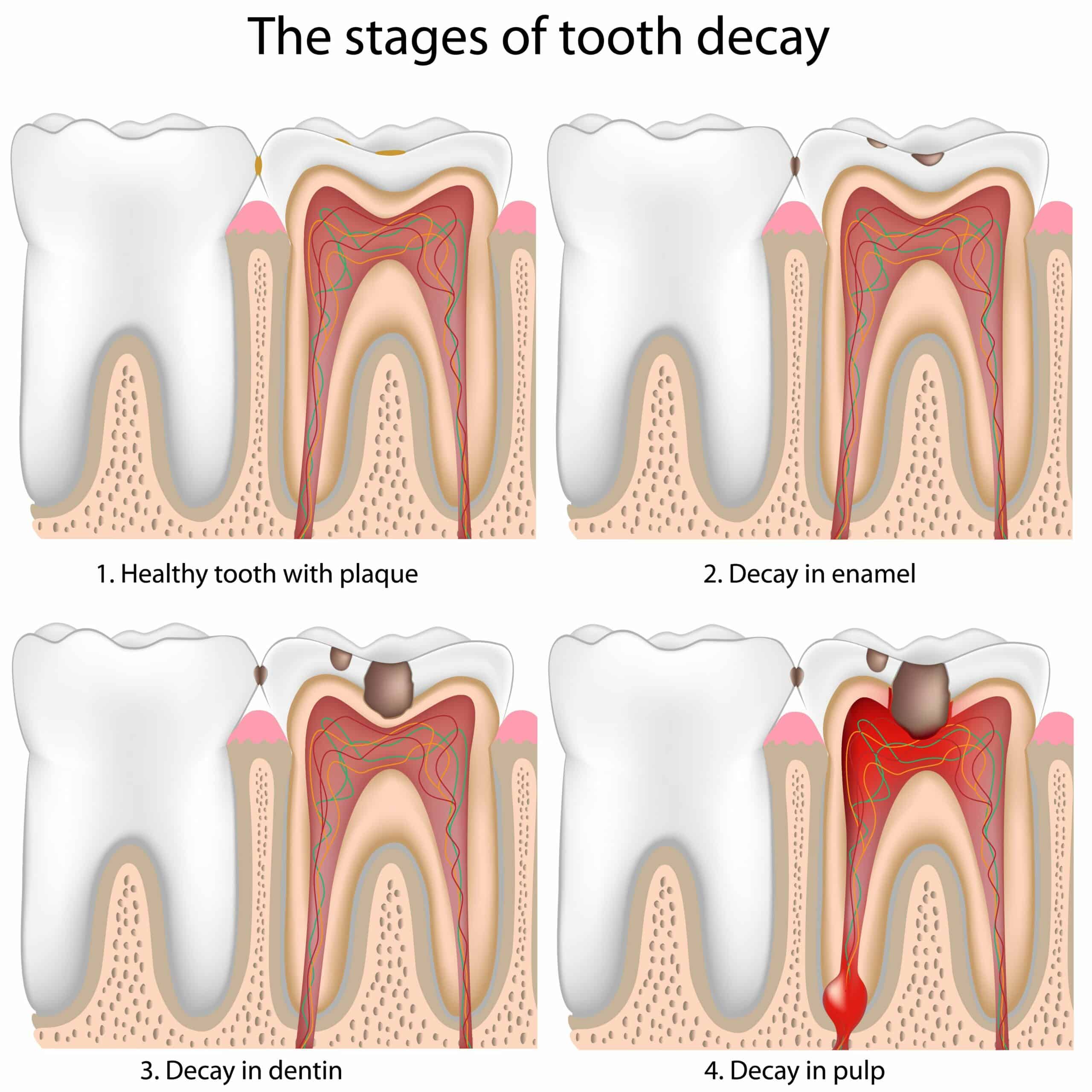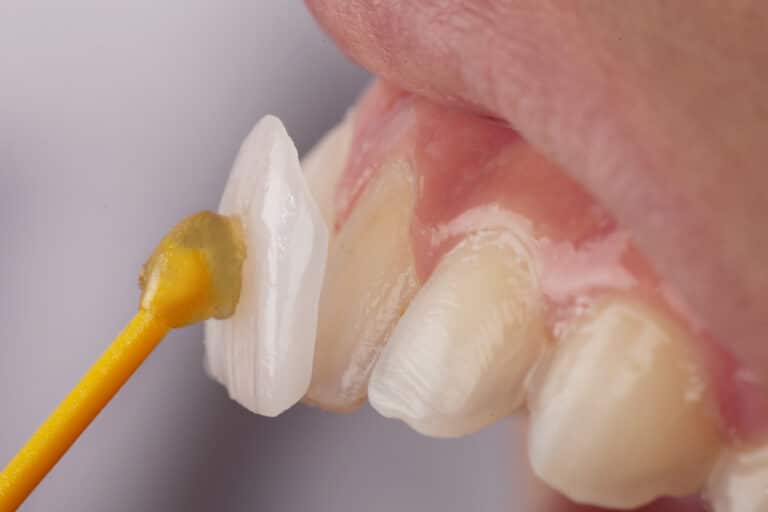Like most people, you probably have a basic understanding of cavities and how they form. However, you may not be fully aware of all five stages of tooth decay. An awareness of cavity development is important since it can help you prevent decay in the first place. Your dentist can also help you prevent cavities with simple general dentistry treatment. In other cases, he or she can address decay with a small filling, rather than larger restoration.
At Astoria Dental Group in Queens, NY, we are committed to patient education. With routine care, you could enjoy lifelong dental health
1. Lesions.
When bacteria build up in your mouth, they consume sugars and starches. The bacteria produce acids, which can strip minerals from your tooth. At this point, a white spot will appear just underneath the enamel. This spot will not appear on x-rays, but it will be visible during a routine exam.
When your dentist sees one of these lesions, he or she can typically restore the health of your tooth with remineralization. For example, fluoride supplements can strengthen your tooth and help combat decay.
2. Decayed Enamel
If a lesion goes undetected, decay will soon affect your dental enamel. Beginning underneath this top layer, it will eventually spread up to the surface. At this point, a cavity will have formed. You will require a filling to keep the damage from growing worse.
3. Decayed Dentin
Underneath your enamel is a softer layer of tissue known as dentin. When a cavity reaches this level, you will typically start to feel the first pangs of a toothache. Additionally, dentin is more porous than enamel, so decay can spread more quickly. Fortunately, in many cases, your dentist can still treat decayed dentin with a filling. In other cases, however, you may require a larger inlay or onlay.
4. Decayed Pulp
In the very center of your tooth is a chamber filled with soft pulp. This pulp also contains nerve endings and blood vessels, which reach down to your root canals. When decay travels all the way to the pulp, you will develop a dental infection. Affecting your nerves, decayed pulp can cause significant discomfort.
When this occurs, the only way to save your tooth is through root canal therapy. Your dentist will clean out the central chamber and the root canals to remove bacteria and decayed tissue. After filling these areas with a rubber compound, he or she will then place a custom dental crown.
5. Abscesses
Without treatment, a dental infection will get worse, and the bacteria will eventually travel down to the ends of your roots. This can cause small, but very painful sores on your gums called abscesses. More alarmingly, infection can spread to the surrounding parts of your gums and even to your jawbone itself. Sometimes, your dentist can still save an abscessed tooth with root canal therapy, but in other cases, you may require tooth extraction.
Learn More about Oral Health
We are always ready to answer any questions you may have. Contact us today for more information, to schedule a routine exam, or to receive treatment for an existing cavity.




